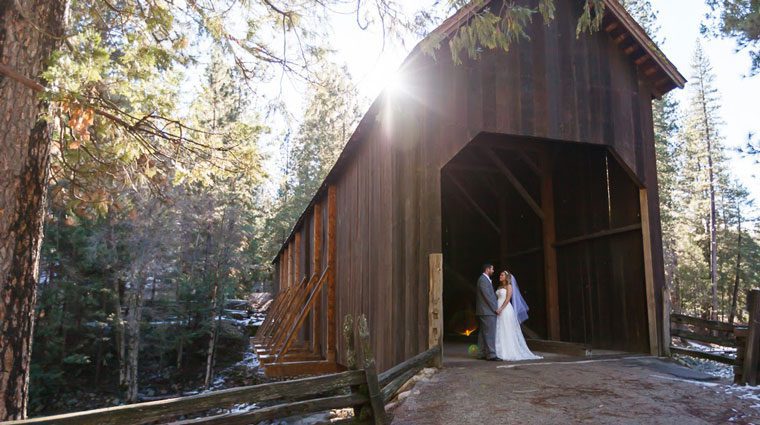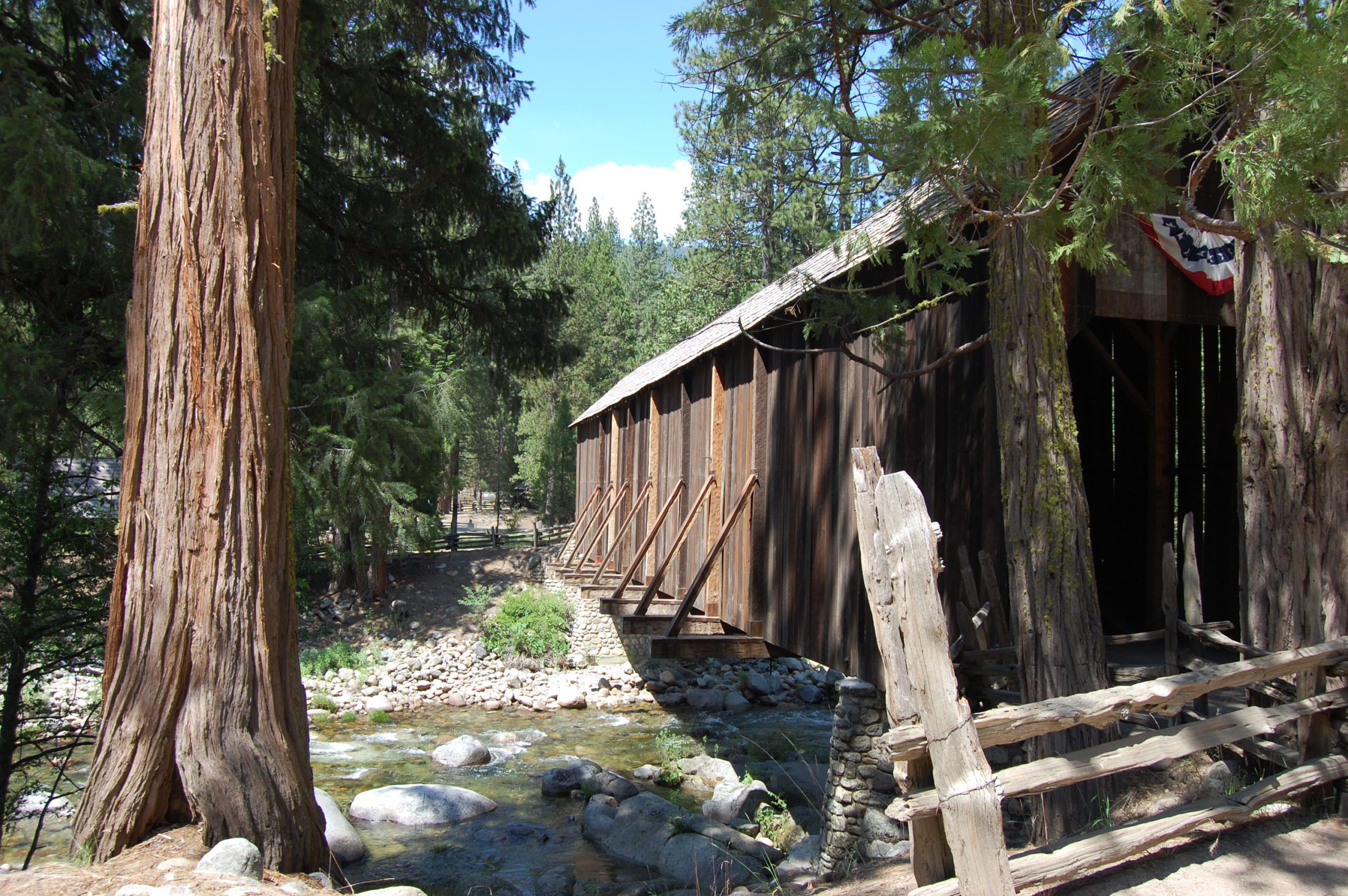Step back into Yosemite’s past as you wander your way through Yosemite History Center where historic structures from various eras of Yosemite’s history tell stories of bygone times.
Read the interpretive signs to explore Yosemite’s history and the people from around the world who contributed to building the park you know today. There is even more to explore in the summer when exhibits inside the Chinese Laundry and Acting Superintendent’s Office are open. You can also take a ride on a horse-drawn wagon or watch blacksmiths at work over a coal forge.
Many of these buildings came from areas all around the park, and were collected in Wawona in the 1950s and 60s. So each building can be seen as a separate chapter in Yosemite’s history, each with its own story to tell.
Here are a few highlights:
Wawona Covered Bridge

The beautiful covered bridge at the entrance to the Yosemite History Center is one popular spot for Yosemite wedding photos in Wawona.
Wawona’s Covered Bridge dates from the mid-1800s as Galen Clark and Henry Washburn worked to create a road from Wawona to Yosemite Valley. That road was completed in 1875 with the labor of some 300 Chinese immigrants who despite the mountainous terrain managed to put in 27 miles of road in just four and a half months!
Chinese Laundry
The newest addition to the Yosemite History center, the Chinese Laundry, tells the story of these determined Chinese immigrants.
Like many others, many Chinese immigrants came to California in hopes of striking it rich. Unfortunately for them, by 1850 the Foreign Miners Tax forced them out of mining and into other occupations. Here in Yosemite, they found roles in laundries, as celebrated cooks, as well as on road crews and construction projects.
Powder House
This tiny building made with thick granite walls was designed to store the explosives used to create Yosemite’s roads, and contain any accidental explosions. It also briefly acted as a jailhouse, but not a good one. In 1915 car thieves broke out by using a leg from their steel-framed cot to dig out the mortar between the rocks. When you are there, take a close look at those walls. How long do you think it would take you to scrape your way out with a blunt piece of metal?
Degnan’s Bakery
Around 1898 Bridget Degnan built a brick bakery in Yosemite Valley close to where the Yosemite Chapel is now. This new building allowed her to bake up to 400 loaves of bread to sell, contributing to a thriving hospitality business. Degnan’s Kitchen is still operating in Yosemite Valley today and was privately owned until 1972.
Artist Studio
Chris Jorgensen, a Norwegian immigrant artist, lived and painted in Yosemite for 20 years. He built a home on the banks of the Merced River near where Sentinel Bridge stands today. Now, relocated to the Yosemite History Center, his home reminds us of the important role artists played in advocating for the preservation of beautiful landscapes like Yosemite’s.
Blacksmith Shop
The Yosemite History Center has a working blacksmith shop. Historically, blacksmiths created and repaired all kinds of essential iron tools and equipment. During the summer look for blacksmiths at work over their forges and anvils.
And More…
These and other buildings in the Yosemite History Center serve as lasting reminders of the people, institutions and lifestyles of Yosemite’s past. Be sure to swing by to see all there is to discover.


